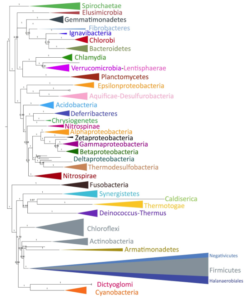Daniel writes:
Hello,
Long time listener, first time writer. It has been far too long for me to offer my sincere gratitude for the podcasts. Some years ago I was a welder working a very boring job and I managed to get through my day by listening to podcasts and lectures. These podcasts and lectures convinced me to give up my boring day job and go to the excitement of university. There I progressed in biochemistry and developed a love for science, and went on to a Masters and am now working on my pHD. You can’t imagine the excitement and fulfillment when I heard our paper was featured on your podcasts (That one about diderms and monoderms). All that work seems to have paid off and it truly feels like I am a real scientists now.
So thank you!
 I feel I need to give a shout out to my pHD program. The pasteur institute has an international pHD program where they call for applicants every year and provide an amazing 3-year pHD program. This institute is probably one of the best for doing science and I couldn’t picture a better pHD. Here is a link:
I feel I need to give a shout out to my pHD program. The pasteur institute has an international pHD program where they call for applicants every year and provide an amazing 3-year pHD program. This institute is probably one of the best for doing science and I couldn’t picture a better pHD. Here is a link:
As for our paper thanks for the nice overview. To address Dr. Schaechter’s comments about seeing how the systems compare between E. coli and the Negativicutes I have this for you:
First of all remember E. coli is one of the most “evolved” bacteria there is. They have a large genome and incredibly complex systems (probably not the best model system due to that, but that’s history). See attached tree (It is pretty rough, so don’t make a big deal about the deep nodes, Monoderm phyla in grey, No root so don’t pay attention to what is ancient). The Negativicutes are so extremely distant that it is amazing they posses the same systems and any genomic synteny. However with the pili (some supplemental figures in the paper) it is clearly the same system. The BAM/TAM system is drastically different and matches the more closely related Fusobacteria, and other Terrabacteria beautifully. We have a lot more to say on this story and we will have more fun articles coming months 🙂
Cheers,
Daniel Poppleton
Anthony writes:
http://www.pnas.org/content/113/34/E5062.abstract
Climate influence on Vibrio and associated human diseases during the past half-century in the coastal North Atlantic

One comment on “TWiM 137 letters”